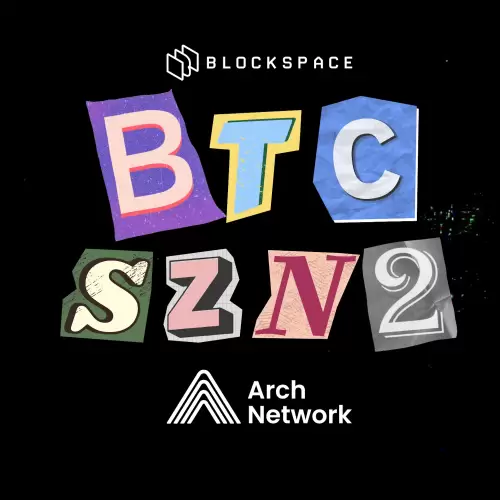 |
|
 |
|
 |
|
 |
|
 |
|
 |
|
 |
|
 |
|
 |
|
 |
|
 |
|
 |
|
 |
|
 |
|
 |
|
Cryptocurrency News Articles
DIA Will Host an AMA on X to Explore How Feeders Power DIA Lumina
Apr 09, 2025 at 04:56 am
DIA will host an AMA on X on April 10th at 13:00 UTC. The session will explore how feeders power DIA Lumina by fetching, processing, and publishing trustless on-chain data.

Decentralized data intelligence (DI) platform DIA announced an Ask Me Anything (AMA) session on X (formerly Twitter) on April 10th at 13:00 UTC. The session will focus on how feeders power DIA Lumina by fetching, processing, and publishing trustless on-chain data.
DIA is an open-source oracle platform that aggregates and provides market data to smart contracts. The platform is designed to be a neutral and trusted ecosystem for transparent financial data.
The DIA ecosystem is composed of three main actors: data analysts, who analyze and prepare data from various sources; data providers, who integrate with the DIA platform to directly publish data feeds; and data users, who consume the on-chain data to build decentralized applications (DApps).
The aim of the platform is to create a synergistic environment that binds together these actors.
The DIA token is used for platform governance, including voting on data verification, directing project development, and integrating with other platforms and services.
The session will be a great opportunity for community members to learn more about how DIA is transforming the landscape of fintech innovation.
DIA is a decentralized data intelligence platform that provides trustless on-chain data to dApps. DIA Lumina, DIA’s flagship product, is a modular Lumina Chain powered by Interoperability Modules.
The Interoperability Modules are responsible for ingesting and converting data from a wide range of sources, including cryptocurrency exchanges, DeFi protocols, and traditional financial institutions.
The role of feeders in this ecosystem is pivotal. They are responsible for fetching data from specific sources, processing it according to predefined rules, and publishing it on-chain in a verifiable format.
This structure ensures the integrity and reliability of the data used by dApps, which is crucial for the stability and adoption of decentralized technologies.
Disclaimer:info@kdj.com
The information provided is not trading advice. kdj.com does not assume any responsibility for any investments made based on the information provided in this article. Cryptocurrencies are highly volatile and it is highly recommended that you invest with caution after thorough research!
If you believe that the content used on this website infringes your copyright, please contact us immediately (info@kdj.com) and we will delete it promptly.
-

-

-

-

-

- Gamma co-founder Nick joins us to talk about the broken NFT market discovery process and how their new platform Signals fixes the ridiculous whitelist system
- Jun 14, 2025 at 09:45 am
- We dive into Bitcoin ordinals vs traditional NFTs, why inscriptions are superior to off-chain storage, and how auction-style price discovery creates fairer markets
-

- Miningcoop: The Future of Multi-Crypto Cloud Mining in 2025
- Jun 14, 2025 at 09:45 am
- As we move into 2025, the cryptocurrency market has entered a more mature and regulated phase. With increasing regulatory clarity and growing awareness among retail users about the concept of “passive income,” cloud mining is rapidly becoming the preferred method for investing in Bitcoin (BTC) and various altcoins.
-

-

- Bitcoin Core 30 Update Will Significantly Increase the Data Limit for the OP_RETURN Function
- Jun 14, 2025 at 09:40 am
- The upcoming Bitcoin Core 30 update, scheduled for release in October, will significantly increase the data limit for the OP_RETURN function — a special operational code that allows users to embed arbitrary data in Bitcoin transactions.
-































































